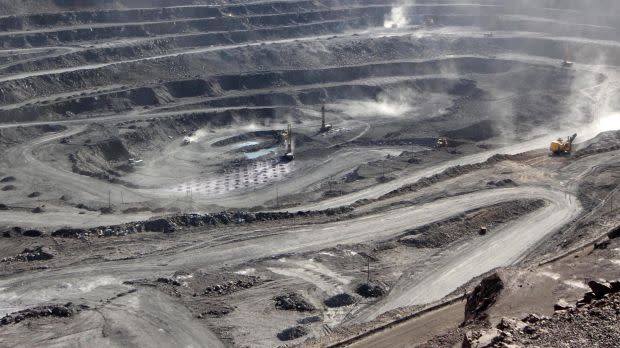How China uses tax policies to defend its rare earths monopoly

China’s dominance in the global rare earths industry is formidable. It makes up nearly 60% of the world’s total mine production of the critical elements, controls an estimated 85% of global processing capacity, and manufactures nearly 90% of all rare earth permanent magnets.
A key factor that has helped China build and maintain its dominance over all segments of the rare earths supply chain is carefully calibrated administrative tools—specifically, tax policies and production quotas.
A quotas and tax toolkit
China’s rare earths quota system has changed over the years. Initially, export quotas put a cap on how much rare earths Chinese firms could sell to foreign buyers. However, China had to scrap the export quotas when it lost its case at the World Trade Organization in 2014, where the US had lodged complaints that the quotas were unfair trade practices. Beijing replaced the export quotas with production quotas, eventually only handing out production licenses to a small number of state-owned rare earth giants.
A new tax system was also put in place to increase the Chinese state’s control over the rare earths industry. At first, this took the form of a resource tax, levied based on quantity produced. Today, the tax is calculated based on value: a 13% value-added tax (VAT) is levied on all rare earth products.


For more intel on the global supply chain, listen to the Quartz Obsession podcast episode on rare earths. Or subscribe via: Apple Podcasts | Spotify | Google | Stitcher.
https://player.megaphone.fm/QMIA9783312161
“The production quota system, combined with the new tax system, now serves as an effective defence against international attempts to break China’s monopoly-like supply chains,” writes Per Kalvig, senior researcher at the Geological Survey of Denmark and Greenland’s Center for Minerals and Materials, in a report published last month on global rare earth supply chains.
How China’s VAT guards against foreign competition
Kalvig explains in detail how China wields its VAT system to tilt the playing field in its favor in the rare earths industry.
All rare earth products, including oxides, metals, and magnets, are slapped with the 13% VAT. When a producer buys raw rare earth materials in China, they pay the international market price, inclusive of the 13% tax. If raw rare earth materials are exported from China, the VAT is not refunded. But exports of rare earth magnets from China are eligible for a VAT refund. That means that Chinese rare earth magnet producers have a 13% raw material cost advantage over their foreign competitors.
“Thus, in the upper and middle parts of the supply chains, an economic competitive advantage of 13% in favor of Chinese companies has been established and an economic incentive has been created for the value-added in all parts to accrue to China,” writes Kalvig.
Meanwhile, a foreign company looking to sell rare earth products to China has to contend with duties and taxes, too.
If the firm is selling rare earth concentrates (produced when raw ore goes through a preliminary step of processing) to China, VAT and import duties aren’t applied. However, rare earth materials that have been further processed to become things like oxides, carbonates, and metals are subject to a 5% import duty and a 13% VAT. This disadvantages foreign rare earth projects: they can only sell to China rare earth concentrates, which have low value added, because more processed products will get hit with duties and taxes and can only be competitive in China if they sell at lower prices—an unattractive proposition to investors.
All this has significant implications for countries that are trying to build up their own rare earth supply chains to compete with, and be less dependent on, China.
“Overall, China’s tax system means that, without changes to VAT refund schemes, China will maintain its monopoly-like status in the rare earth value chains,” notes Kalvig.
Beyond fending off foreign competition, this tax system helps shift China’s domestic rare earth industry towards higher value-added and more technologically sophisticated activities, like manufacturing permanent magnets, while at the same time preserving China’s reserves of its strategic rare earth resources.
How the US can use tax policies to rebuild its rare earths sector
Still, China isn’t the only country using tax policy to its advantage in rare earths. The US is turning to its tax toolkit, too.
A bipartisan bill introduced in Congress last summer would provide tax credits for the domestic production of permanent rare earth magnets. Meanwhile, analysts are calling for such production tax credits to be extended to each link of the US rare earth supply chain, and to make rare earths mining eligible for the highest tax deductions for the depletion of mines, wells, and other natural deposits.
Sign up for the Quartz Daily Brief, our free daily newsletter with the world’s most important and interesting news.
More stories from Quartz:
India’s banking loopholes paved the way for a shipbuilder’s $3 billion default
Lithium-ion batteries are fueling the fire on a burning cargo ship full of Porsches
